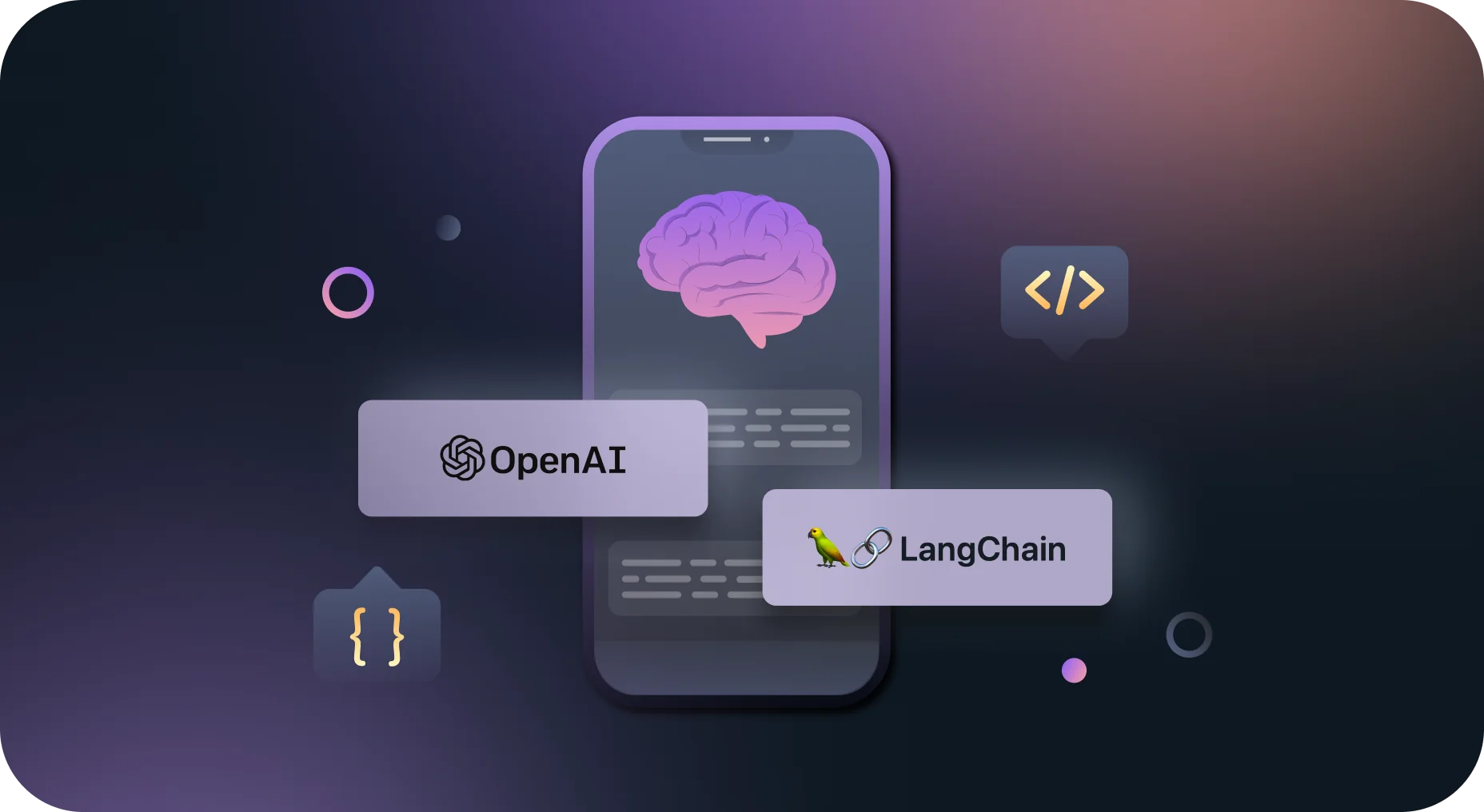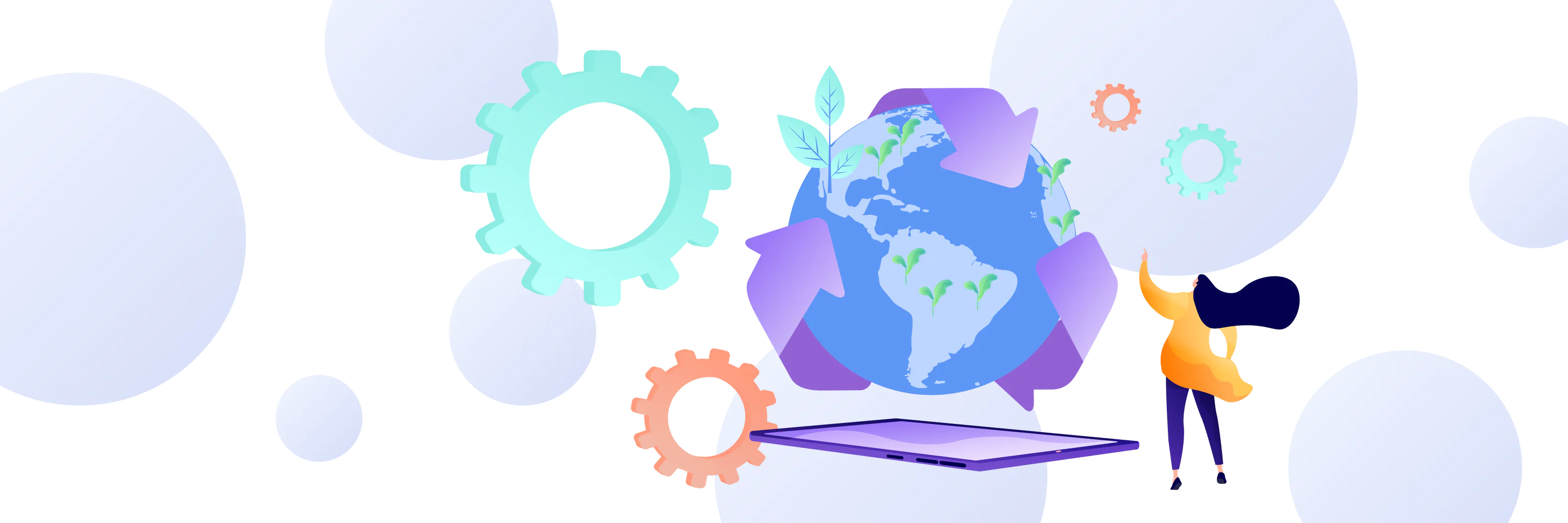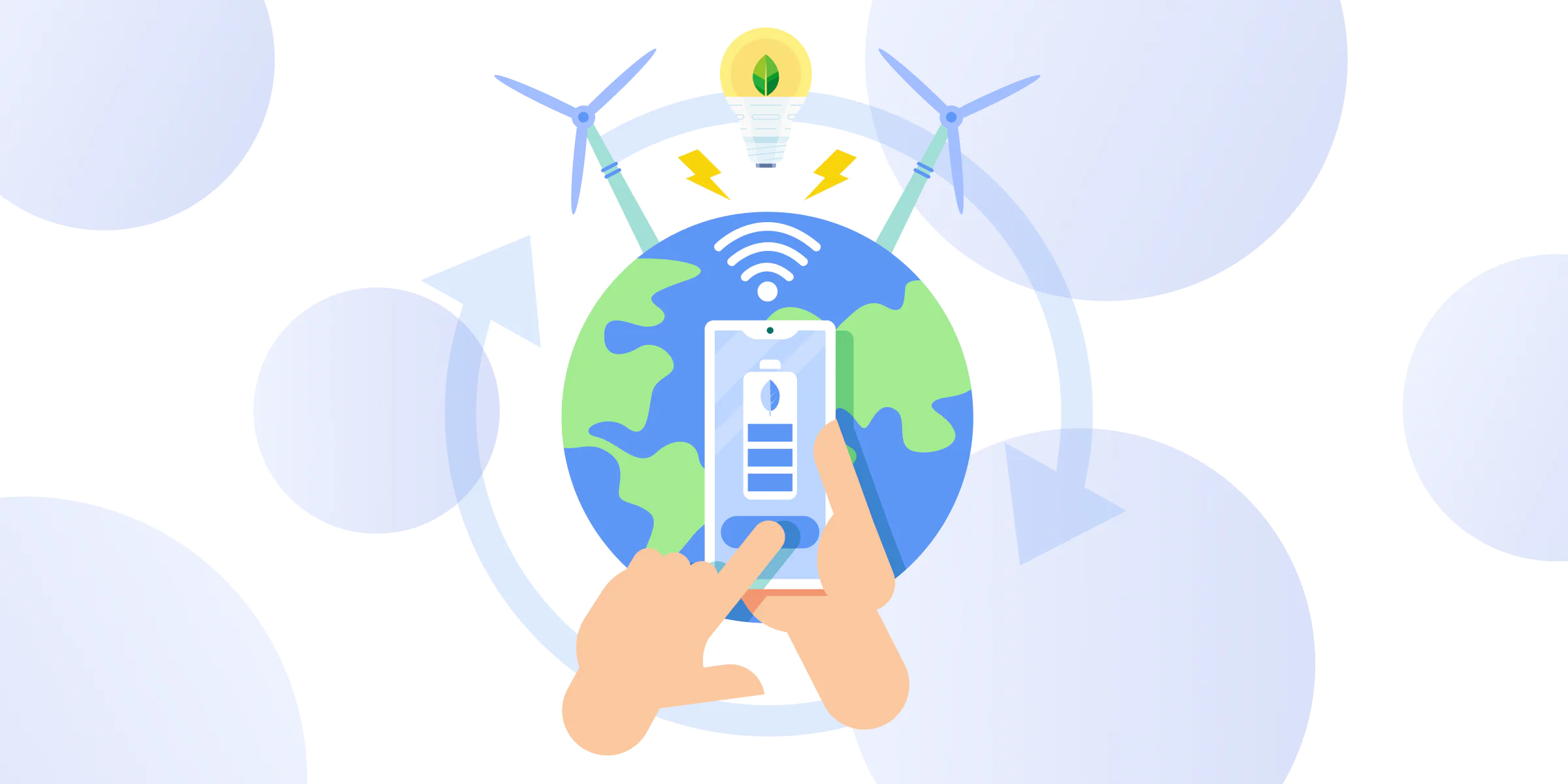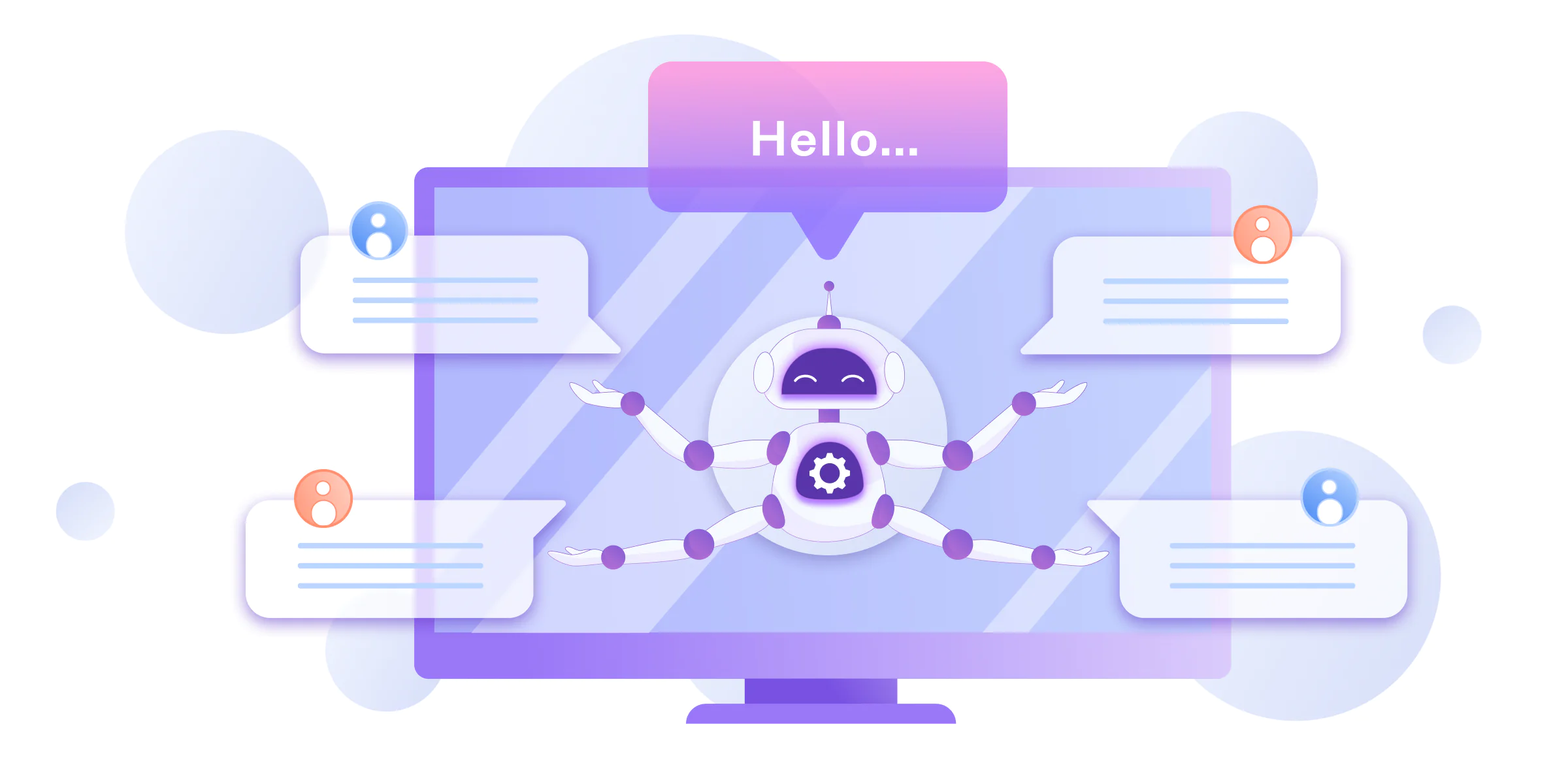AI chatbot development is in high demand. Only about 20% of businesses use one, but over 60% think about adopting this technology. At Devtorium, we often work with chatbots because they are of interest to our clients. Today, we’d like to share one of our current cases, where we created an AI chatbot for a client that runs an innovative marketing solution.
The product is a CMS that gathers data through quizzes. The AI chatbot capabilities are required to collect and verify the collected data. In addition, we are expanding the product with an AI-powered voice chatbot that can schedule calls and generally substitute call center services.
Devtorium has a dedicated Research and Development Team that works with different types of AI services. In this case, our developers did all the work, creating the CMS, integrating a messenger chatbot, and developing a voice bot for calls.

AI Chatbot Development for a Marketing Solution: Base Product Outline
In this project, the product is a quiz-based CMS that creates a variety of questionnaires based on user-set parameters. The quizzes are flexible so every user can custom-tailor the questionnaire for their business. The CMS makes collecting, processing, and visualizing data easy to help users understand their target audience.
The project aims to create an effective solution that will help businesses generate qualified leads. This product’s text chatbot collects data. The next phase, the voice bot, can schedule calls, initiate APIs, and send messages. Most importantly, the AI can use advanced ML models to understand what the customer says and proceed according to the information received in real-time.
During this project, our software development team used a variety of technologies:
Back-end:
- Node.js
Front-end:
- React
Databases:
- MongoDB
- PostgreSQL
DevOps:
- AWS
- Jenkins
- GitHub
AI (phone service):
- Vonage
ML models:
- OpenAI GPT-3.5(GPT-4)
- OpenAI speech-to-text (Whisper)
- OpenAI text-to-speech
It’s essential to note that Devtorium always uses a combination of technologies and frameworks to achieve the best results. We discuss the client’s ideas and goals in depth to build a product that can achieve them while staying within budget.

Voice AI Chatbot Development Services Overview
In this article, we wanted to focus specifically on the voice bot designed for this project. Below, we will detail exactly how such a solution works and what it can achieve within the current level of technology. However, we’d also like to remind you that this tech is evolving fast. Almost anyone today can build an AI chatbot using LangChain or similar frameworks. You don’t need a coding degree for that. In fact, some platforms are so user-friendly that they can help you build a basic bot with limited capabilities with no tech knowledge.
However, if your business wants to invest in a solution that will give you a competitive advantage, you’ll need a professional-grade tool. The Devtorium’s lead AI specialist, Oleksii Makarov, outlines how to create an AI chatbot that can talk to your clients.
Voice AI chatbot development starts with VoIP
First of all, when creating a voice bot, we need to use a phone service. VoIP technology is quite advanced today, so this won’t be an issue. We chose to use Vonage because it is currently the best option regarding both quality and service versatility.
Speech-to-text: an essential part of AI chatbot development services
Speech-to-text technology is crucial for building an AI voice bot because it enables the machine to process audible information. We use Assebly.ai in our projects because it currently delivers the highest level of accuracy. Most importantly, it’s able to process information effectively in real-time. Therefore, it helps create an illusion that the user is talking to a person instead of a machine.
While working on this project, we noticed that lag is the biggest issue with these chatbots. Simply put, processing data takes time, so the pauses in their responses are too long. Assembly’s processing capabilities help us reduce this time to manageable levels.
Machine Learning models do the powerlifting in data processing
Devtorium uses the GPT engine versions 3.5 and 4 to build the most efficient chatbots for every application. This technology is the leading AI power behind any voice bot because the solution uses it to process data. Basically, it’s your bot’s ‘thinking power’.
We actively use advanced prompt engineering techniques while designing instructions for the bot’s conversations. The main task is creating instructions that enable the bot to learn and grow. The critical task is to make the conversation sound as natural as possible to a human.
Going back through text-to-speech
Now that the data has been processed and the machine has created the response, we use the GPT-provided text-to-speech tool. It works pretty well for the current technology level. However, we are excited because there are some announcements for more advanced features. In addition, we expect to see more voices and ‘emotions’ options quite soon.
It’s great to see this technology developing and including the emotional aspect of conversations. This truly bridges the gap between machines and people. Most importantly, we are sure this will boost the bot’s ability to deliver higher-quality customer services fast.
Back to the phone service
AI chatbot development is a complex process that includes many steps. However, at the final stage, it returns to where it started. In our case, the Vonage phone service is where the bot talks to the customer.
Voice AI Chatbot Development Benefits
The extraordinary thing about using voice bots is that they do not only cut down the cost of outsourcing call center services. Even with the current technology level, we can create a bot that extracts data from spoken conversations in JSON format. In addition, it’s able to send out a call to third-party APIs.
In simple terms, the bot can trigger an application to run in response to your customer’s query. It will also automatically process all data from the conversation and show it to you in the way you choose. This offers limitless opportunities for studying your customers’ preferences, reactions, and interests. Therefore, a voice bot can become your single most valuable tool for interacting with and researching your target audience. It can also initiate various programs or connect the client to a human operator if the machine cannot process the query.
If you want to see how it could work in practice, set up a free consultation with the Devtorium AI team!
More on AI from Devtorium:

















